Autumn stargazing feels like a return to normality for those of us who love to observe the night sky.
Once September's here, astronomers leave the long days and short nights of summer behind and welcome the return of dark skies.
More autumn stargazing

Longer, darker nights allow us to view some of the most loved and prized night-sky objects that return each autumn.
And there’s a lot to look forward to in the night sky during autumn or fall, whether you’re using your naked eye, binoculars or a telescope.

We'll reveal the best objects to see during autumn stargazing from your garden or from a dark-sky site away from light pollution.
Are targets are suitable for absolute beginners and well-seasoned astronomers.
Wrap up warm and grab a red torch to follow this guide as you head out into the dark.
Downloading a stargazing app will help you find your way around the targets we highlight too.
September
Constellations

The best constellations in September include Andromeda and Cassiopeia.
They lie close to each other and are visible after 10pm towards the northeast.
Use Cassiopeia, the distinctive W-shaped constellation, to star-hop to Andromeda.
The brightest stars in Andromeda are Alpheratz (Alpha Andromedae), Mirach and Almach.
Andromeda Galaxy

Within Andromeda is one of the most famous deep-sky objects of all, the Andromeda Galaxy, M31.
An autumn stargazing session wouldn't be completed without a look at the Andromeda Galaxy.
Located 2.5 million lightyears away, the spiral galaxy is the most distant object we can see with the naked eye, looking like a smudge of light.
Using a small pair of binoculars (10x50) will bring out its central region and will make it appear brighter too.
The star Schedar in Cassiopeia will point the way to it.
You can find out more about locating it in our guide on how to see the Andromeda Galaxy and our tutorial on easy star-hops.
Equinox and Harvest Moon
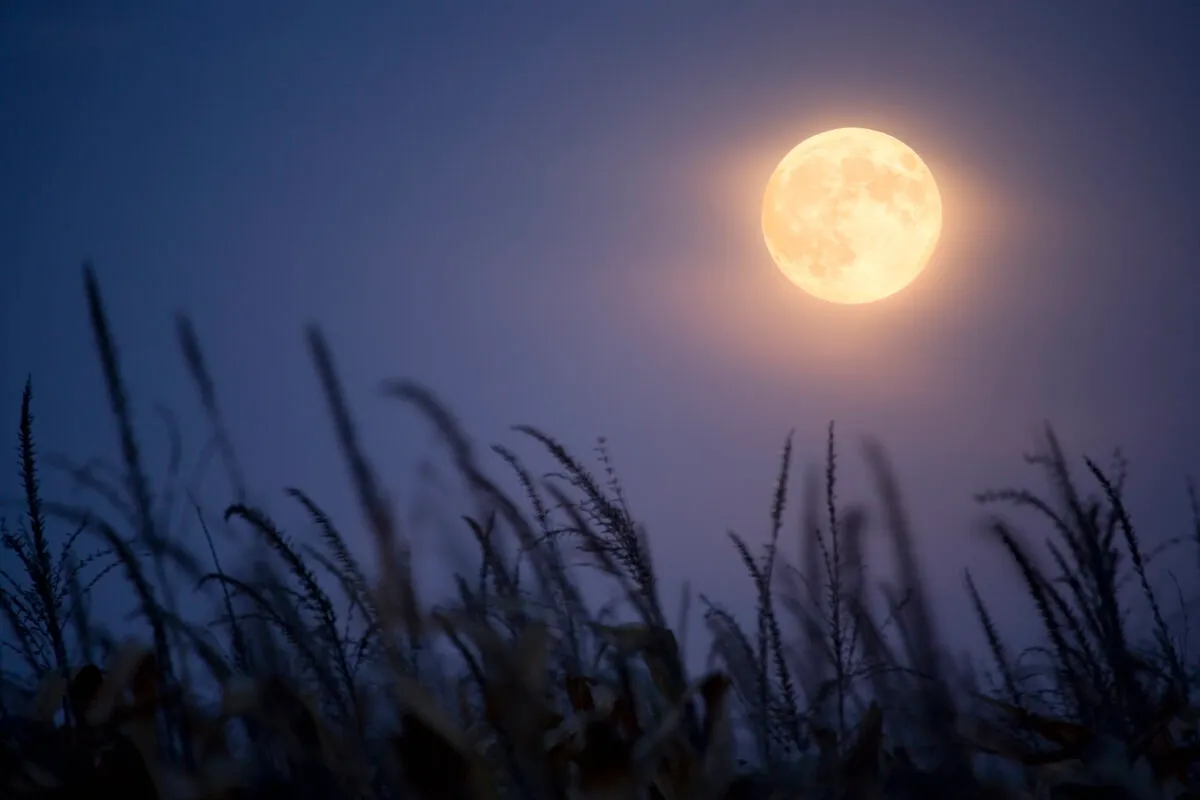
When we think of autumn stargazing, many of us think of the autumn equinox and the Harvest Moon.
The autumn equinox is the point at which the Sun illuminates the Northern and Southern Hemispheres equally, marking the start of autumn in the Northern Hemisphere.
And near the autumn equinox you'll be able to see the Harvest Moon.
October
Constellations
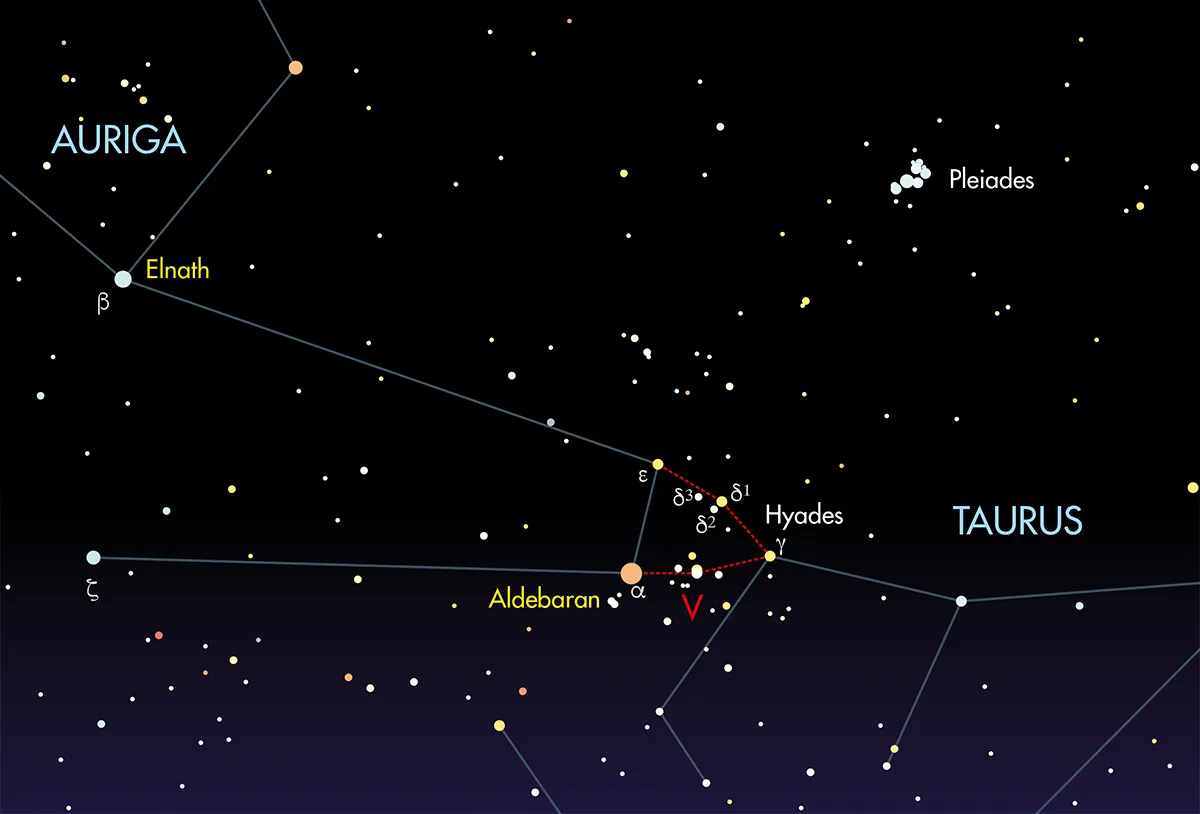
The large, sprawling constellation of Taurus, the Bull is a great target in October, best viewed from mid-October.
It is dominated by Aldebaran, an unmistakable glowing orange star that forms the eye of the bull.
This beautiful jewel of a star can be used to star-hop to the famous Crab Nebula, M1.
Too faint to be visible with the naked eye, larger telescopes with 50x magnification will bring this nebula to life as a hazy patch of gas and dust through the eyepiece.
Star clusters

Taurus also hosts two fantastic naked-eye open star clusters.
Aldebaran is surrounded by one of these star clusters, a striking V-shaped pattern of stars lying on its side, called the Hyades.
Just above this is another open star cluster called the Pleiades, commonly known as the Seven Sisters because of the seven stars you can see with your naked eye, although it contains many more than that.
As a nice challenge, see if you can pick out bright star Electra within the cluster.
Any autumn stargazing session could involve picking out naked-eye star clusters. See how many you can find.
November
Constellations

The constellation Draco, the Dragon winds its way between Ursa Major, the Great Bear, and Ursa Minor, the Little Bear.
Visible in the sky all year round, these constellations hold some delightful targets.
The Plough

The Big Dipper or the Plough is an asterism – a pattern of stars within a constellation – that forms the back and tail of Ursa Major.
Mizar and Alcor, a double star in the handle of the Plough can be seen with the naked eye.
Mizar is the brightest of the two, so reach for your binoculars or small telescope if you are struggling to see the dimmer Alcor.
Also within Ursa Major lie deep-sky objects Bode’s Galaxy, M81 and the Cigar Galaxy, M82.
Larger telescopes will bring out the spiral structure of Bode’s Galaxy and the rod shape of the Cigar Galaxy.

A full Moon will shine brightly in the night sky on 27 November rising in the east after 4pm, washing out any fainter stars or deep-sky objects.
Nevertheless, the Moon is a great target for beginners who want to get to know their way around our nearest celestial neighbour.
A pair of binoculars will show craters and lunar maria at full Moon, and more detail at other phases.
December
Our autumn stargazing guide takes us into winter, as nights get longer and darker still.
Orion
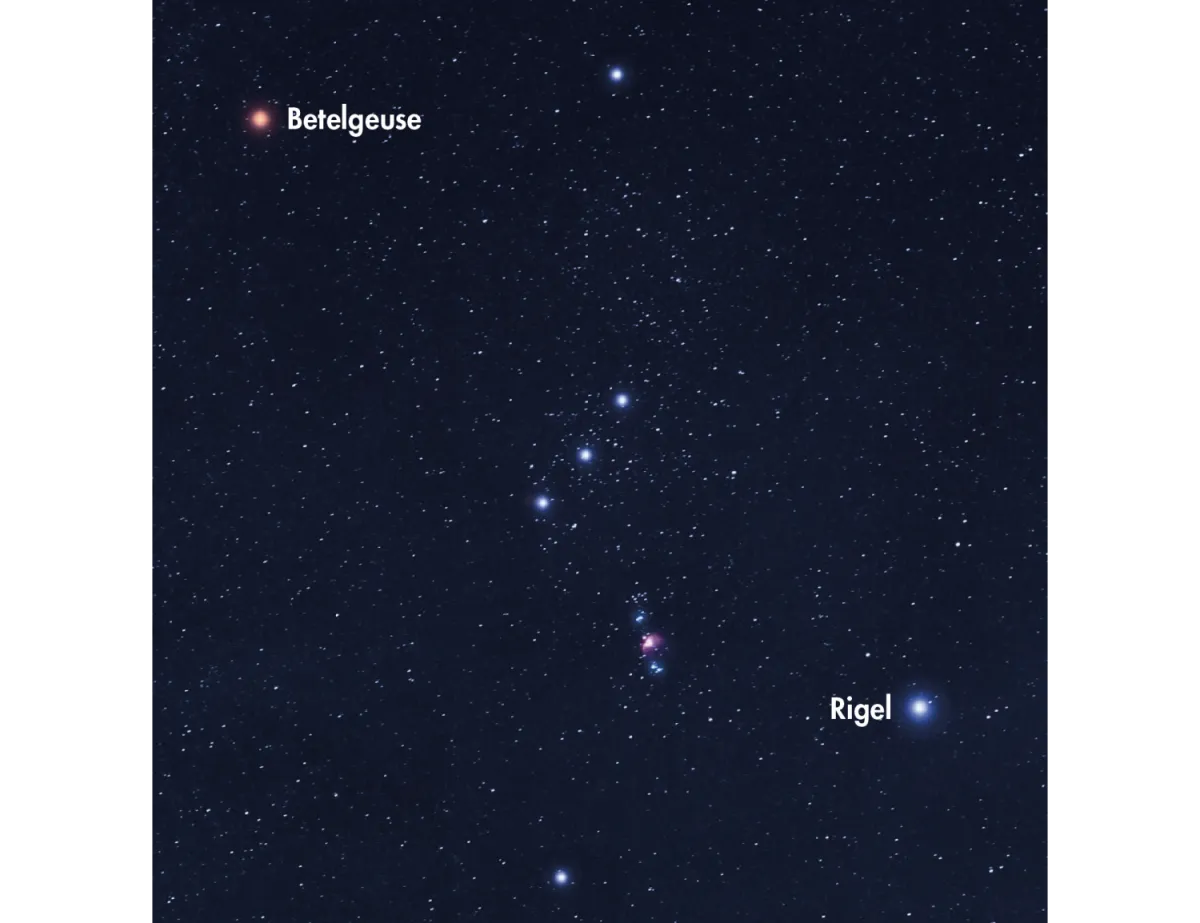
As we approach mid-winter, the stunning constellation of Orion, the Hunter is prominent.
It can be found rising in the east after sunset and is easy to identify from the three stars aligned in an almost straight line across its centre.
These three stars – Alnitak, Alnilam and Mintaka – form the famous asterism Orion’s Belt.
Orion is a favourite with many sky-watchers, not only because of its two brightest stars – Betelgeuse, a bright orange star and Rigel, a cooler blue supergiant – but because it contains one of the most beautiful deep-sky objects in the whole sky.
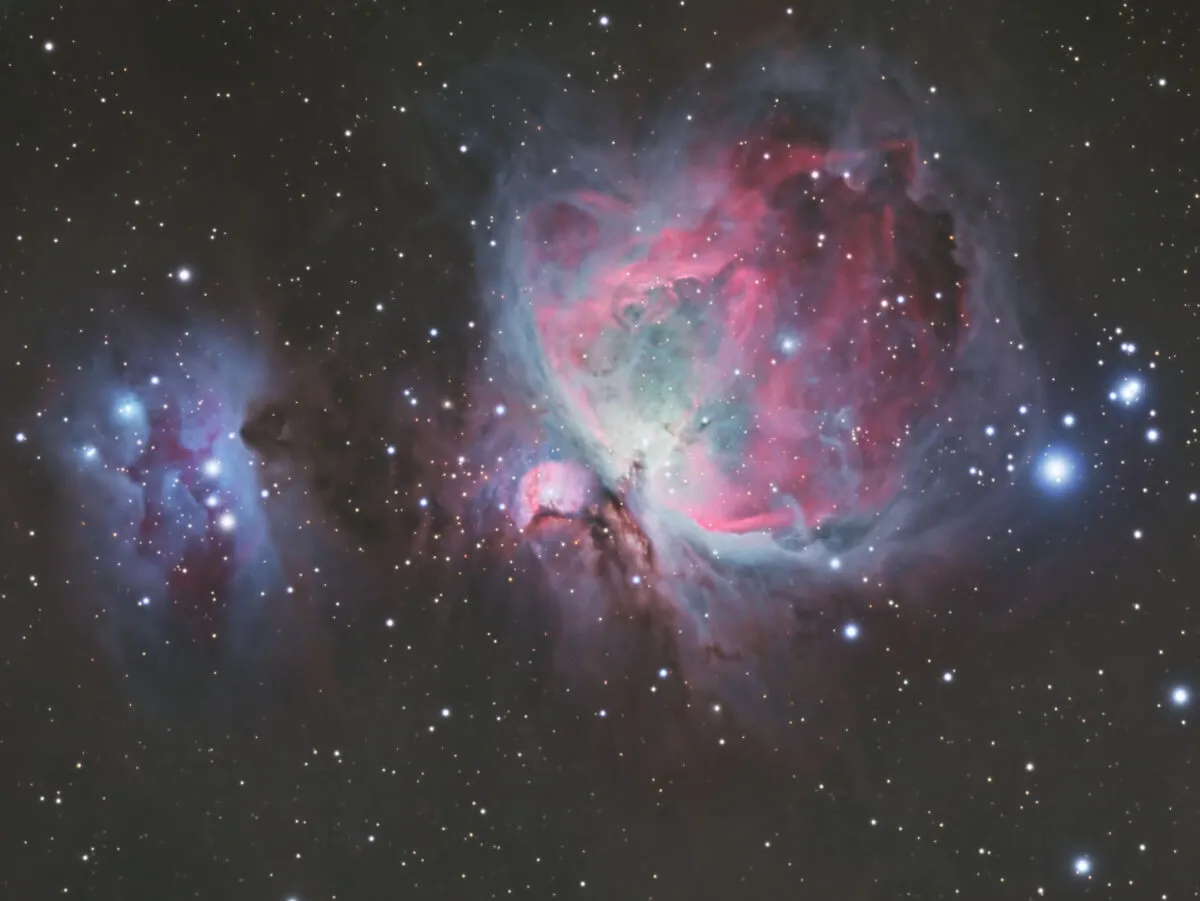
The Orion Nebula, M42 is located in the centre of Orion’s Sword, a shorter vertical line of three fainter stars which hangs down from Orion’s Belt.
The nebula looks like the middle ‘star’ of the sword to the naked eye, but a little bit fuzzier than the stars above and below it.
Even a small pair of 10x50 binoculars will bring out this stellar nursery’s grey-green nebulosity.
A tight cluster of four stars called the Trapezium glows within the heart of the Orion Nebula, and can be easily seen through a small telescope.
Gemini
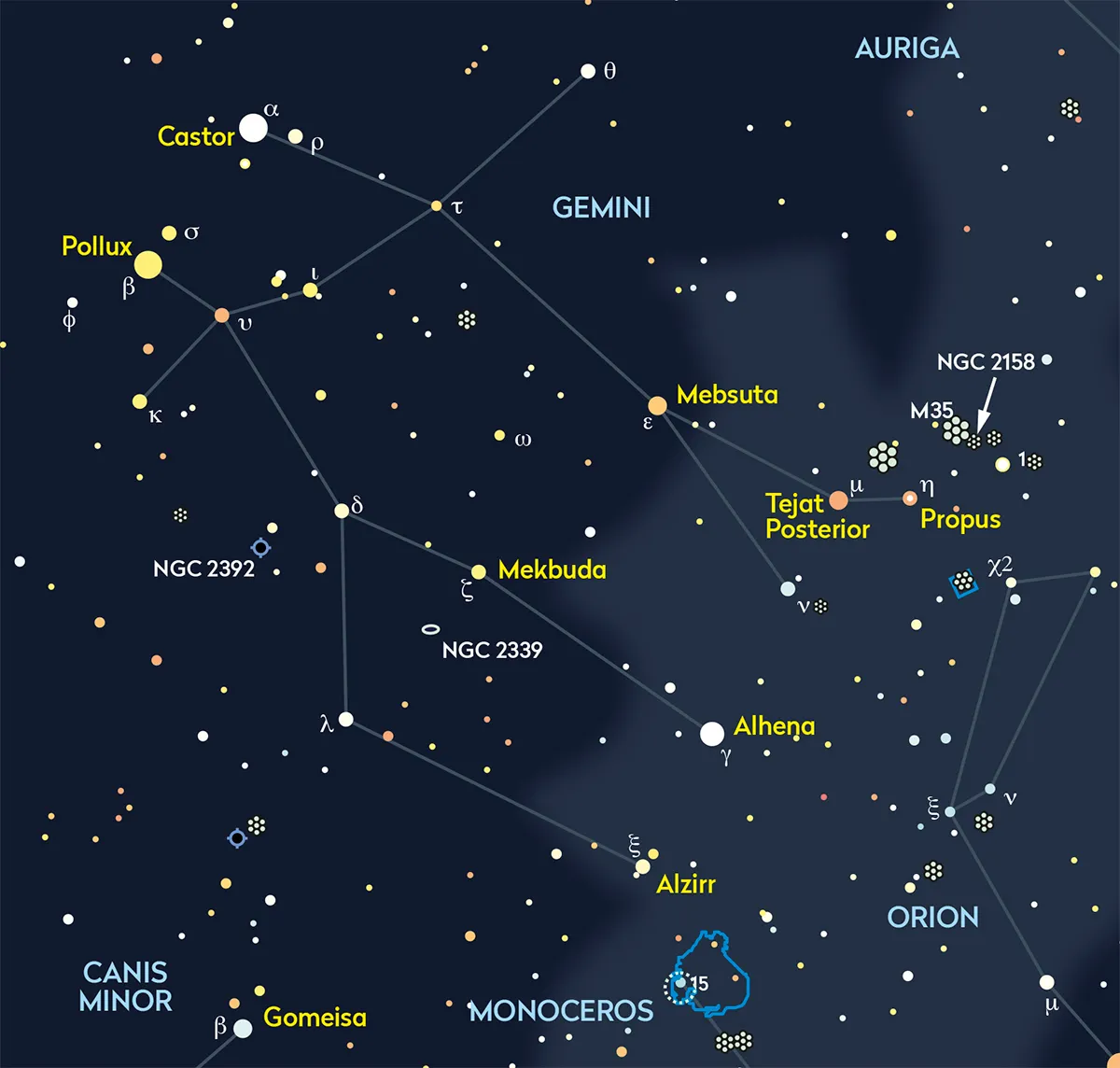
The constellation of Gemini, the Twins can be found above Orion’s left shoulder.
At this time of year, the twins appear to be lying down with their feet near Orion’s raised arm.
Gemini’s two most prominent stars, Castor and Pollux, form the heads of the twins and can be found by drawing an imaginary line through Rigel to Betelgeuse.
Extending this line will lead you neatly to Castor and Pollux, positioned one above the other.
On 21 December, we celebrate the winter solstice, when Earth’s northern pole is at its maximum tilt away from the Sun and our star will be at its lowest daily maximum elevation in the sky.
This guide originally appeared in the September 2023 issue of BBC Sky at Night Magazine.

